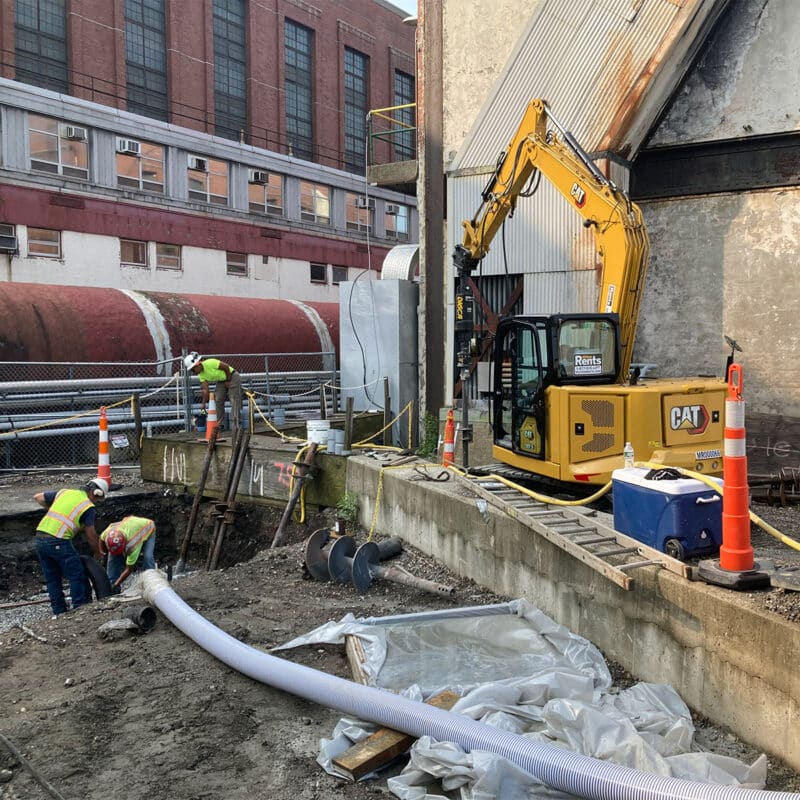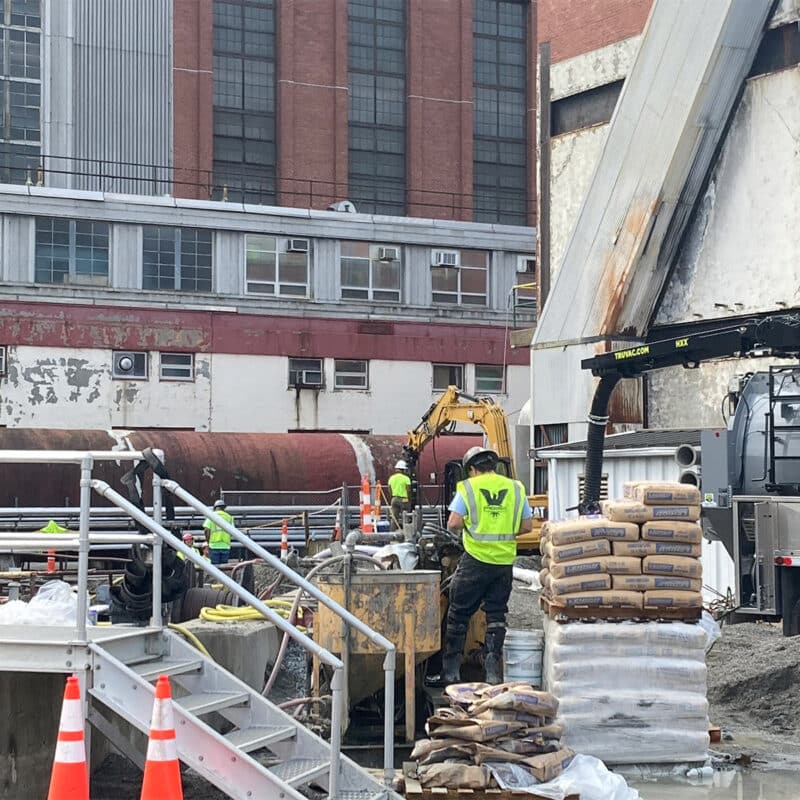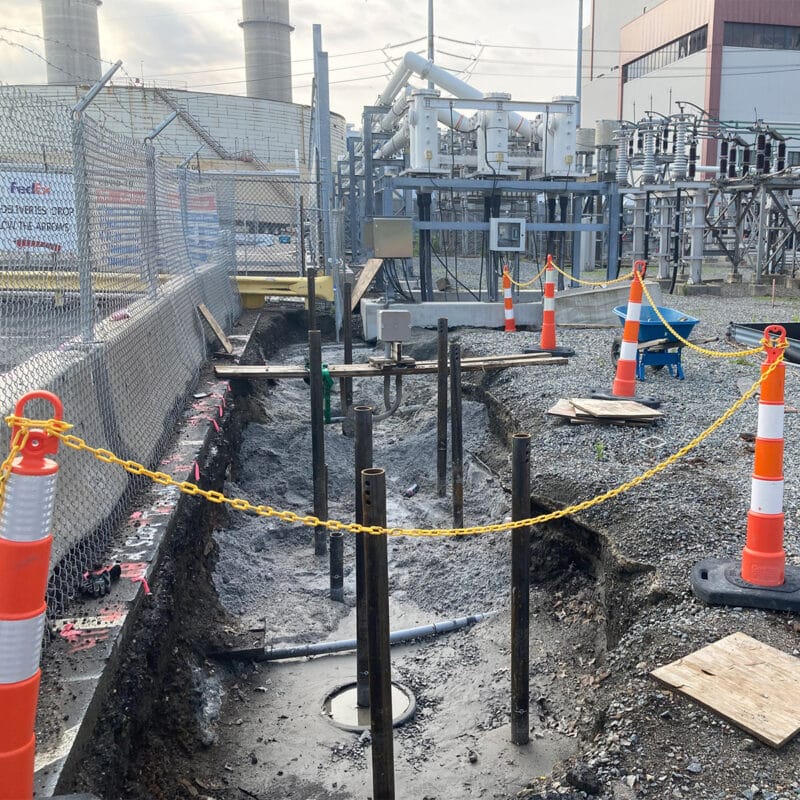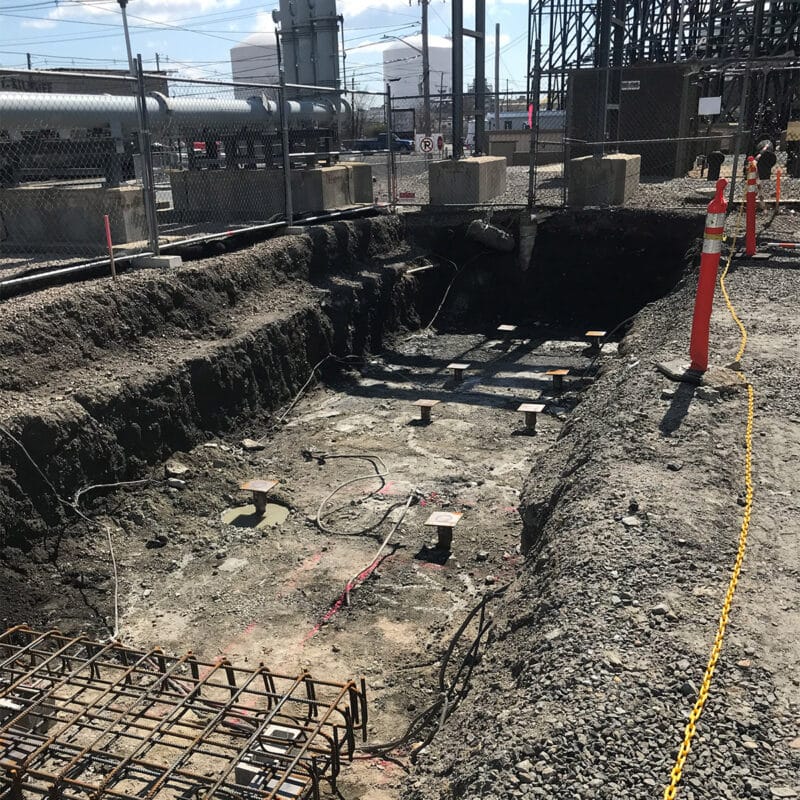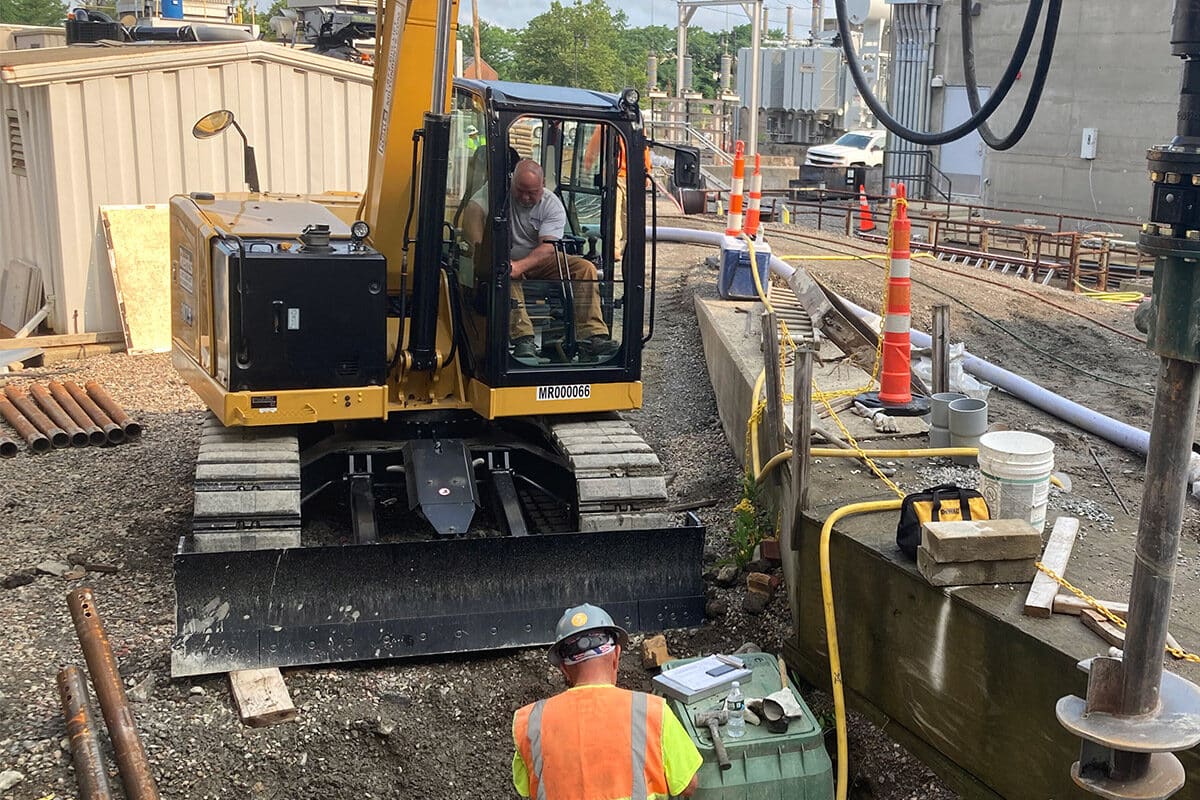PROJECT OVERVIEW
Phoenix Project #1812
This project originally called for the installation of 802 drilled micropiles (“DMPs”) to support a new perimeter fence around the existing substation. As a result of logistical challenges and cost considerations surrounding drill spoils management, Phoenix worked closely with the project team to develop a drilled displacement pile alternative. The displacement piles were able to achieve similar design loads to the originally-specified DMPs, and proved to be beneficial to the challenging site logistics and project schedule.
Prior to the start of the production work and acceptance of the alternate pile design, three sacrificial pile load tests were conducted to validate the project’s design assumptions. Two tests were performed in tension with bond zones in different soil strata. The final test pile was laterally loaded to validate that the drilled displacement pile would be able to resist high wind loads anticipated on the structure. All piles met or exceeded the project’s acceptance criteria, and the alternate was accepted for use.
To ensure successful performance of all production piles, we needed to be mindful that soil profiles and thicknesses of bearing strata varied significantly across the large project site. Phoenix was able to monitor these changes in real time, as torque values were recorded throughout each pile’s installation, transmitted and tracked wirelessly by a mobile device. The torque data was used to correlate the soil strata with nearby boring logs, and used to determine the top and bottom depth of each pile’s bond zone. Overall, pile depths varied from 30’ to 55’ below grade. Phoenix was able to average at least 8 piles installed per shift, more than twice what was anticipated for the original DMP design.
Noting some other site challenges, the majority of these piles were installed in close proximity to existing live 115 KV or 330 KV transformers and buses. All installations were performed in the presence of qualified safety spotters that grounded equipment and monitored installations for the duration of the project. Also, several natural and man-made obstructions were encountered throughout the course of our work, resulting in redesigned pile caps and additional piles as necessary to accommodate revised loading.



